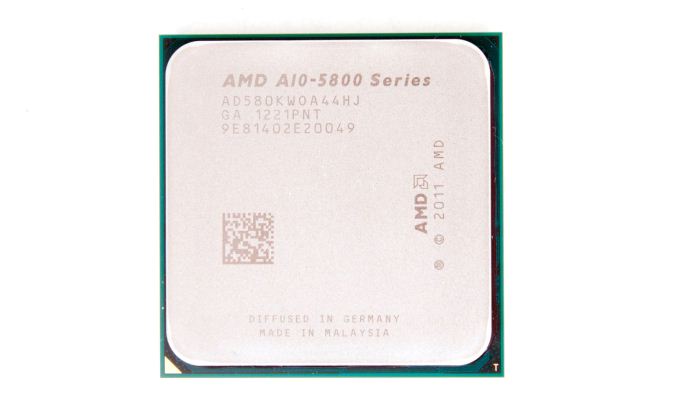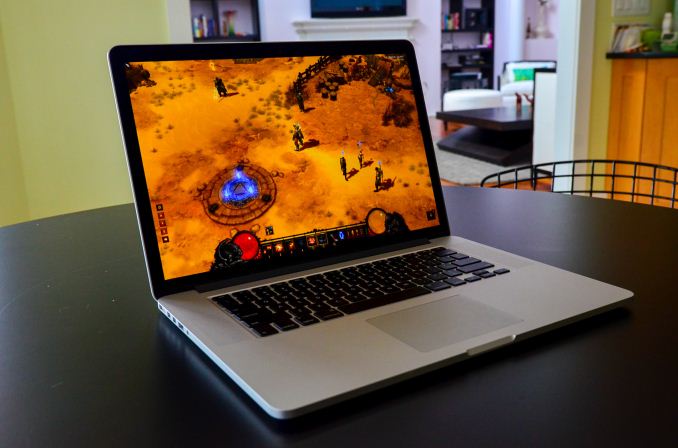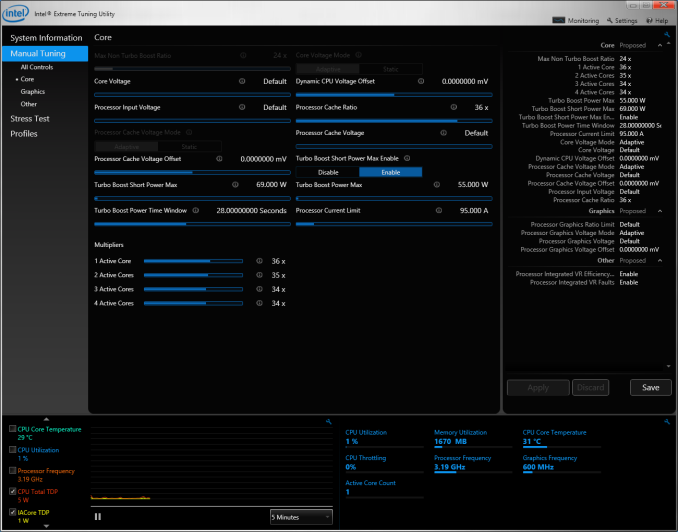Intel Iris Pro 5200 Graphics Review: Core i7-4950HQ Tested
by Anand Lal Shimpi on June 1, 2013 10:01 AM ESTThe Comparison Points
Intel sort of dropped this CRB off without anything to compare it to, so I scrambled over the past week looking for things to put Iris Pro’s performance in perspective. The obvious candidate was Apple’s 15-inch MacBook Pro with Retina Display. I expect its successor will use Iris Pro 5200, making this a perfect comparison point. The 15-inch rMBP is equipped with a GeForce GT 650M with a 900MHz core clock and a 5GHz memory datarate.
I also dusted off a GeForce GT 640 desktop card to shed a little more light on the 650M comparison. The 640 has a slightly higher core clock (925MHz) but it only has 1.7GHz DDR3, working out to be 27GB/s of memory bandwidth compared to 83GB/s for the 650M. Seeing how Iris Pro compares to the GT 640 and 650M will tell us just how good of a job Crystalwell is doing.
Next up is the desktop Core i7-4770K with HD 4600 graphics. This is a Haswell GT2 implementation, but at a much higher TDP than the 47W mobile part we’re comparing it to (84W). In a notebook you can expect a much bigger gap in performance between the HD 4600 and Iris Pro than what we’re showing here. Similarly I also included a 77W HD 4000 for a comparison to Ivy Bridge graphics.
On the AMD front I have the 35W A10-4600M (codename Trinity), featuring AMD’s 7660G processor graphics. I also included the 100W A10-5800 as a reference point since we were largely pleased with the GPU performance of Trinity on the desktop.
I listed TDPs with all of the parts I’m comparing here. In the case of the GT 640 I’m adding the TDP of the CPU (84W) and the GPU (65W). TDP is half of the story with Iris Pro, because the CPU, GPU and eDRAM all fit into the same 47W power envelope. With a discrete GPU, like the 650M, you end up with an extra 45W on top of the CPU’s TDP. In reality the host CPU won’t be running at anywhere near its 45W max in that case, so the power savings are likely not as great as you’d expect but they’ll still be present.
At the request of at least one very eager OEM, Intel is offering a higher-TDP configuration of the i7-4950HQ. Using Intel’s Extreme Tuning Utility (XTU) I was able to simulate this cTDP up configuration by increasing the sustained power limit to 55W, and moving the short term turbo power limit up to 69W. OEMs moving from a 2-chip CPU + GPU solution down to a single Iris Pro are encouraged to do the same as their existing thermal solutions should be more than adequate to cool a 55W part. I strongly suspect this is the configuration we’ll see in the next-generation 15-inch MacBook Pro with Retina Display.
To remove as many bottlenecks as possible I configured all integrated GPU options (other than Iris Pro 5200) with the fastest supported memory. That worked out to being DDR3-2133 on desktop Trinity and desktop IVB, and DDR3-2400 on desktop Haswell (HD 4600). The mobile platforms, including Iris Pro 5200, all used DDR3-1600.
On the software side I used NVIDIA's GeForce R320 v320.18, AMD's Catalyst 13.6 beta and Intel's 9.18.10.3177 drivers with Crystalwell support.













177 Comments
View All Comments
Elitehacker - Tuesday, September 24, 2013 - link
Even for a given power usage the 650M isn't even to on the top of the list for highest end discrete GPU.... The top at the moment for lowest wattage to power ratio would be the 765M, even the Radeon HD 7750 has less wattage and a tad more power than the 650M. Clearly someone did not do their researching before opening their mouth.I'm gonna go out on a limb and say that vFunct is one of those Apple fanboys that knows nothing about performance. You can get a PC laptop in the same size and have better performance than any Macbook available for $500 less. Hell you can even get a Tablet with an i7 and 640M that'll spec out close to the 650M for less than a Macbook Pro with 650M.
Eric S - Tuesday, June 25, 2013 - link
The Iris Pro 5200 would be ideal for both machines. Pro users would benefit from ECC memory for the GPU. The Iris chip uses ECC memory making it ideal for OpenCL workloads in Adobe CS6 or Final Cut X. Discrete mobile chips may produce errors in the OpenCL output. Gamers would probably prefer a discrete chip, but that isn't the target for these machines.Eric S - Monday, July 1, 2013 - link
I think Apple cares more about the OpenCL performance which is excellent on the Iris. I doubt the 15" will have a discrete GPU. There isn't one fast enough to warrant it over the Iris 5200. If they do ever put a discrete chip back in, I hope they go with ECC GDDR memory. My guess is space savings will be used for more battery. It is also possible they may try to reduce the display bezel.emptythought - Tuesday, October 1, 2013 - link
It's never had the highest end chip, just the best "upper midrange" one. Above the 8600m GT was the 8800m GTX and GTS, and above the 650m there was the 660, a couple 670 versions, the 675 versions, and the 680.They chose the highest performance part that hit a specific TDP, stretching a bit from time to time. It was generally the case that anything which outperformed the MBP was either a thick brick, or had perpetual overheating issues.
CyberJ - Sunday, July 27, 2014 - link
Not even close, but whatever floats you boat.emptythought - Tuesday, October 1, 2013 - link
It wouldn't surprise me if the 15in just had the "beefed up" iris pro honestly. They might even get their own, special even more overclocked than 55w version.Mainly, because it wouldn't be without precedent. Remember when the 2009 15in macbook pro had a 9400m still? Or when they dropped the 320m for the hd3000 even though it was slightly slower?
They sometimes make lateral, or even slightly backwards moves when there are other motives at play.
chipped - Sunday, June 2, 2013 - link
That's just crazy talk, they want drop dedicated graphics. The difference is still too big, plus you can't sell a $2000 laptop without a dedicated GFX.shiznit - Sunday, June 2, 2013 - link
considering Apple specifically asked for eDRAM and since there is no dual core version yet for the 13", I'd say there is very good chance.mavere - Sunday, June 2, 2013 - link
"The difference is still too big"The difference in what?
Something tells me Apple and its core market is more concerned with rendering/compute performance more than Crysis 3 performance...
iSayuSay - Wednesday, June 5, 2013 - link
If it plays Crysis 3 well, it can render/compute/do whatever intensive fine.